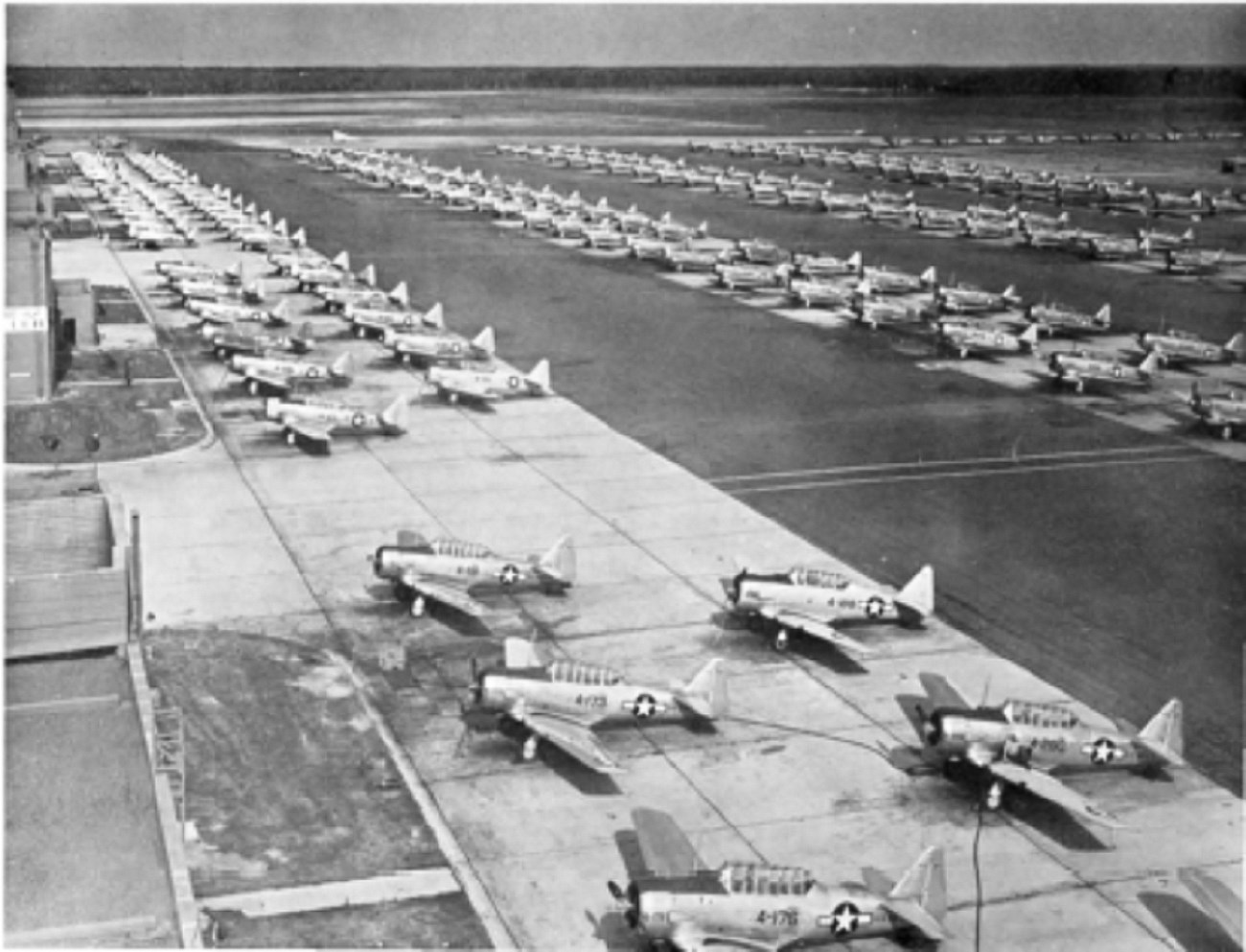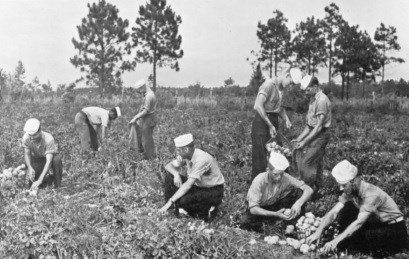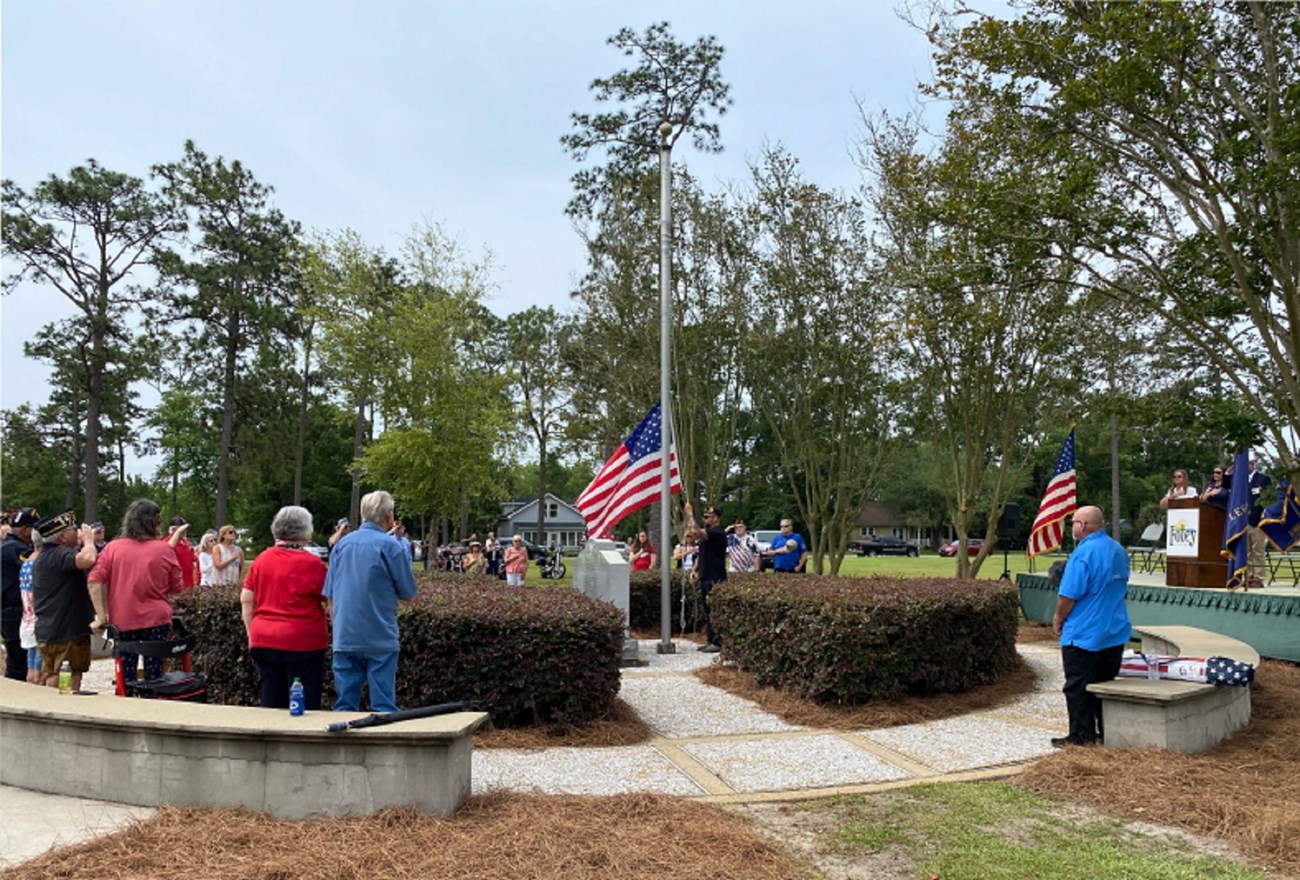Last updated: December 28, 2023
Article
Foley, Alabama

City of Foley, Alabama
American World War II Heritage City
On Dec. 5, 1942, less than one year after the attack on Pearl Harbor, the U.S. Navy opened Barin Field, a training center for U.S. Navy pilots located in Foley, Alabama. The center became a major facility for the Navy and served as an auxiliary training center for Pensacola Air Station in Florida.
By 1943, the Barin Field training center held the record for logging more flight hours than any other Navy training center. However, this record came at a cost. Between May and September of 1943, 19 men in VN-4D8, the Barin squadron charged with intermediate visual flight training, died in accidents. By the end of November 1944, the number had reached 40. After looking into the accident rate at the field, Drew Pearson, a nationally syndicated columnist and radio personality, dubbed it “Bloody Barin".
The population of Foley exploded during the war years. The number of aviation cadets who came through the Barin Field training facility was many times larger than the town’s population. This had a major impact on housing and other parts of the economy in a town that had 846 people in the 1940 census. In its first 24 months of operations, 5,795 students were trained at the center. Trainees and staff were boarded in almost every vacant room in Foley and as many as five families occupied a single house. In 1943, the National Housing Administration built 72 concrete modular apartments at the current site of Riviera Utilities in East Foley. By 1945, 1,886 enlisted personnel and 165 officers had been assigned to Barin Field helping to further expand Foley's wartime population.

City of Foley, Alabama
Foley also had a prisoner of war camp, Camp Foley, which had about 250 Axis prisoners. The surrounding area was primarily agricultural and POWs were often assigned to work details on local farms.
In 1943, the Women’s Club of Foley recognized the sacrifices made by Barin Field aviators and Foley residents with the planting of a live oak tree. A flagpole and stone marker were dedicated near the oak in 1946. Today, the oak tree, flagpole and marker stand in Foley’s Heritage Park and, together with the Foley Veterans Memorial in Max Griffin Park, are an ongoing commemoration of the service of so many in World War II.

City of Foley, Alabama
